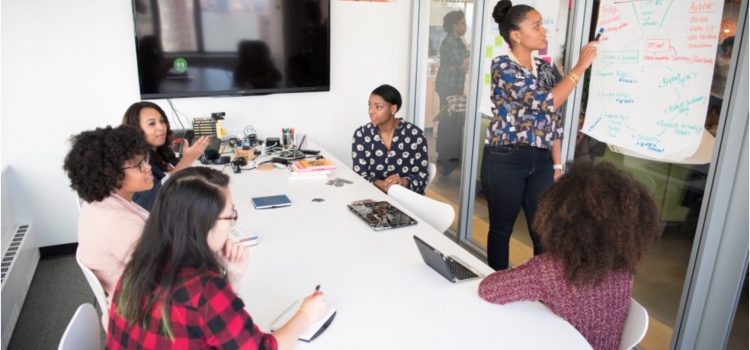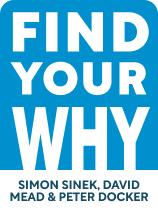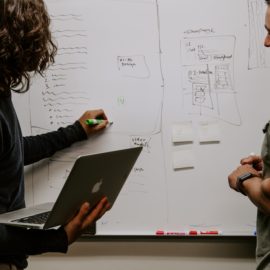

This article is an excerpt from the Shortform book guide to "Find Your Why" by Simon Sinek, David Mead, Peter Docker. Shortform has the world's best summaries and analyses of books you should be reading.
Like this article? Sign up for a free trial here .
What is the best method for facilitating a team purpose workshop? How can a team purpose workshop lead to greater success?
To determine your purpose in the first place, Find Your Why author Simon Sinek and his co-authors created a step-by-step process that individuals and groups can follow in a group discussion or workshop. Sinek’s process to find your purpose helps you or your team explore past experiences for insight into what moves you.
Keep reading to learn the steps for conducting the most effective team purpose workshop, according to Simon Sinek.
Team Purpose Workshop: A Guided Discussion
In this process, you’ll identify important stories in your personal or company experience, share them with a partner or group facilitator, and pull out themes. You’ll then distill these themes to write your purpose statement. (Shortform note: While Sinek argues that you can find your purpose by looking inward, Viktor Frankl argues the opposite in Man’s Search for Meaning. He contends that you can only find meaning out in the world—in other people or causes—not in your own mind.)
The process of finding your purpose for teams is longer than the individual process. It comprises four stages: opening the discussion, mining team members’ stories, drafting the purpose statement, and closing the discussion.
Stage 1: Open the Discussion
Sinek suggests starting by sharing an example of an organization that has a clear purpose, or Why. That will introduce participants to the theory and show them what they can expect from the discussion.
Then, ask people to pair up and discuss what motivates them about the team. For example, you might ask questions like, “When you first joined, what about the team resonated with you?” and “What continues to resonate with you and motivate you today?”
Next, show the video of Sinek’s TED Talk about purpose, and ensure participants understand his basic ideas.
(Shortform note: During this stage of a team purpose workshop, having team members start by discussing their motivations can create connection because it encourages genuine interactions where peers can listen and affirm each other’s experiences.)
Stage 2: Mine Their Stories
The goal in this stage is to extract two key insights from stories participants will share in groups: the core action the team consistently takes, and the effect the action has on others.
To do so, the authors suggest dividing participants into groups that reflect the diversity in the room. During the team purpose workshop, avoid teaming people up with the colleagues they work with every day. (Shortform note: As David Epstein argues in Range, people from diverse backgrounds bring different ideas and values to the table, which results in new insights. Interestingly, he also advocates striving for diversity in ideals: He contends that an organization with diverse ideals can be more effective than one in which everyone coalesces around a single vision, in contrast to Sinek’s belief that everyone in the organization should align with the same purpose.)
To extract the first insight—the core actions the team consistently takes—the facilitator should begin by asking participants to share with their small groups stories of when they took pride in being part of the team. Then, ask each small group to share their three most emotionally impactful stories with the rest of the team. Ask follow-up questions after each story to uncover its significance. For instance, you might ask, “What feelings did that moment stir up in you?” “What did you learn from that experience, and how has that shaped you?” or “What made you decide to share that story today?”
Ask participants to choose an action verb or phrase for each story they have shared. The verbs should capture the core actions the team took. Finally, ask each group to share what they’ve written while you take notes, highlighting phrases or expressions that come up more than once.
| Team Purpose Workshop Troubleshooting for Facilitators The process of finding your purpose for teams is complex, and problems can arise. Facilitators can be most effective by keeping these suggestions in mind: If a team is struggling to come up with examples, help reframe their thoughts by considering proud moments that may be overlooked. In The Power of Moments, Chip and Dan Heath suggest paying attention to small wins and milestones that usually go uncelebrated, as well as focusing on progress instead of results. To come up with good follow-up questions, there are strategies facilitators can apply. The most important strategy is to listen while people talk rather than plan what you’re going to say next. Also, there are some easy but meaningful follow-up questions to keep in mind, including asking for examples, raising counterpoints, and simply asking people to tell you more. If the team isn’t sure how to translate stories into action verbs or phrases, remind them of another process in which they use verbs and phrases to solidify ideas: writing objectives in action-oriented language. The logic behind both processes is the same. Attaching action words to stories makes the stories more concrete—similar to how action verbs help make objectives actionable, as John Doerr instructs in Measure What Matters. |
To extract the second insight—the key positive effect the team has on others—ask small groups to share stories of people whose lives changed for the better, thanks to the team. Then, ask each group to share their responses while you write down a phrase from each response that captures the essence of the team’s effect on others, and note repeated phrases.
(Shortform note: Since the authors encourage participants to focus on the feelings the team generates, rather than the product or services they provide, this could unintentionally make an organization seem more virtuous than it is. Since customers are savvy—and as Sinek argues in Start With Why, they can detect manipulation—you shouldn’t overlook your business model and the less sanitized parts of the work you do. This will help make your purpose statement meaningful and truthful.)
Stage 3: Draft the Purpose Statement
The third stage is to write the first draft of a purpose statement. Sinek emphasizes that the statement should be actionable and resonate with the team, but the wording doesn’t need to be perfect.
To begin, the facilitator should show participants a sample purpose statement and explain where each part of the statement will come from: The team’s core actions will shape the first part of the statement; the team’s effects on others will shape the second part.
Ask small groups to draft a purpose statement using the notes from the previous conversations, particularly the repeated phrases and ideas. Each small group should do their own draft. Finally, ask small groups to share their drafts out loud so that all the participants together can decide whether to keep one of the drafts or combine them. For example, two small groups could come up with these purpose statements for a financial services institution: 1) “Empower customers to secure their financial goals,” and 2) “Give people the tools they need to build their financial futures.” The full group might then combine the statements as follows: “Empower customers to secure their financial futures.”
Save all the notes you didn’t use in the final draft of the purpose statement. These are the themes you will use to determine your How.
| Steps for Effective Collaboration To help the team collaborate effectively during the workshop, facilitators might want to frame the process using the steps Kim Scott outlines in Radical Candor: – Listening. Make sure everyone listens to each other and encourage them to build on each others’ ideas. – Clarifying. Help small groups refine their ideas before sharing them with the rest of the participants. If you catch something that’s unclear, encourage them to revise it before presenting it so others will assess their ideas fairly. – Debating. Encourage respectful debating in the small groups and in the larger group. You can do this by stopping a conversation if it becomes about “winning” rather than exchanging ideas, or if people seem to get tired of the discussion. – Deciding. After some debate, transition to decision-making. Remember to leave the decision in the participants’ hands—the facilitator guides but doesn’t participate in the choice. |
Stage 4: Close the Discussion
To close your team purpose workshop, Sinek suggests the facilitator ask the team for volunteers to keep refining the phrasing of the purpose statement. Then, suggest ways the team can start living their purpose, including the following:
- Highlight instances when people act in alignment with the team’s purpose, and point out how their outcomes align with the purpose.
- Use the purpose statement as guidance when making important decisions.
- Discover their personal purpose, and reflect on how it aligns with the work they do as part of the team.
Teams: Share Your Insights With the Rest of the Team
As with the individual process, the team process of sharing your purpose involves validating your insights. However, this works on a much bigger scale and thus requires more steps.
To begin, the authors advise planning another three- to four-hour group discussion session to carry out the steps detailed in this section.
Next, leaders should invite people who didn’t participate in the team purpose workshop. The authors suggest you invite no more than 50 people. Look for participants who will be enthusiastic about joining the discussion, because they’re most likely to share their enthusiasm with others after the meeting.
(Shortform note: In The Tipping Point, Malcolm Gladwell explains that enthusiasm is one of the characteristics that make some people more persuasive than others. Their enthusiasm, which they communicate through their words and body language, makes other people want to listen to their ideas.)
Step 1: Introduce Your Purpose
To begin this stage of the team purpose workshop, show the new participants Sinek’s TED Talk, and make sure they understand the basic concepts of knowing your Why.
Next, explain that the purpose statement came from the stories team members shared during the previous discussion. Recount some of the stories.
Then, share the purpose statement, reminding them that the phrasing might not be perfect, but the meaning behind it and the action it invites them to take should resonate.
Be alert to disagreement—if most participants feel unsure, you might need to repeat the purpose discussion. Some people might feel unsure if they aren’t aligned with it themselves, if they think others will disagree with it, or if they worry that it goes against part of the team’s strategy or history.
| Ownership of the Purpose Starts With the Leader At this stage in the team purpose workshop, you’re encouraging ownership of the purpose from people who didn’t participate in discovering it and might therefore be hesitant to adopt it. To help them get there, you can practice Extreme Ownership—taking full responsibility for your team’s performance. Modeling extreme ownership helps you develop ownership in team members, because if you as the leader have doubts, your team will pick up on that and generate their own doubts. Jocko Willink and Leif Babin recommend two practices to ensure you model the kind of ownership you expect from your team: 1. Make sure the Why or purpose statement resonates with you and that you believe that it makes sense given the team’s strategy and history. 2. Don’t be overconfident. Keep an open mind regarding the disagreements people might have with the purpose, and listen to any concerns. |
Step 2: Connect With the Purpose and Look Ahead
At this stage, the authors suggest splitting participants into groups. Ask them to share stories of when they felt proud to be a part of the team and how those moments reflected the organization’s purpose. Participants can also identify team members who personify the purpose.
(Shortform note: Speaking about moments of pride and their alignment with your purpose not only helps you reflect on it—it also inspires others to act in alignment with the purpose, or Why. In The Power of Moments, the authors argue that when you take a courageous action, like living true to your organization’s purpose even when it’s hard, that becomes a defining moment of pride. For people who witness your courage, it becomes a defining moment of inspiration.)
Next, ask participants to brainstorm ways to use the purpose to propel the team forward. They should consider internal management and the products or services it offers. For example, they might pitch a new policy or product that reflects the purpose. (Shortform note: Beyond this session, you can encourage team members to pitch creative ideas by applying the tools Ed Catmull shares in Creativity, Inc., including promoting candor, embracing failure, and being protective of new ideas.)
To close your team purpose workshop, Sinek advises asking for volunteers to share the purpose with peers, be living examples of it, and bring one of the brainstorming ideas to life. (Shortform note: In The Tipping Point, Malcolm Gladwell offers guidelines on how to choose the right messengers. When people volunteer, keep an eye out for connectors (people with strong social networks), mavens (people who are adept at gathering and retaining information), and persuaders (people who are great at getting other people on board), and encourage them to take on some of the volunteer roles.)

———End of Preview———
Like what you just read? Read the rest of the world's best book summary and analysis of Simon Sinek, David Mead, Peter Docker's "Find Your Why" at Shortform .
Here's what you'll find in our full Find Your Why summary :
- Simon Sinek’s steps to understanding and living your purpose and your organization’s
- How to create and write your purpose statement
- What to do after you find your Why: Determine your How






